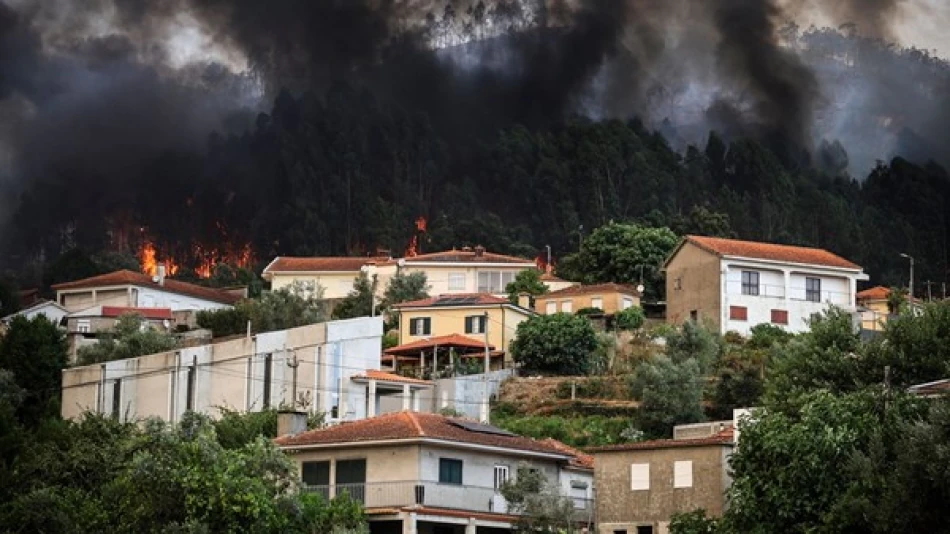
Brave Firefighters Battle Raging Wildfires Across Southern Europe
Southern Europe Braces for Climate Reality Check as Wildfires Rage Amid Record Heat
Firefighters across southern Europe are battling devastating wildfires while preparing for an incoming heat wave that could push temperatures above 40°C (104°F), highlighting the region's growing vulnerability to extreme weather events that are becoming the new normal rather than seasonal anomalies.
Portugal Bears the Brunt of Fire Crisis
Northern Portugal has emerged as the epicenter of the current wildfire crisis, with blazes raging for days near the small town of Ponte da Barca. While Elisio Oliveira, head of the Civil Protection Authority, reported that fires in the area are now largely under control, he cautioned that weather conditions remain unfavorable for sustained containment efforts.
The situation underscores Portugal's persistent struggle with wildfire management, a challenge that has plagued the country since the deadly 2017 fires that killed over 100 people and prompted major reforms in emergency response protocols.
Heat Wave Threatens Regional Stability
Meteorologists warn that an approaching heat wave will likely affect neighboring Spain as well, creating a tinderbox effect across the Iberian Peninsula. The extreme temperatures, combined with bone-dry winds, transform even minor incidents—whether from negligence, arson, or lightning strikes—into potential forest fires.
Spain Sees Mixed Results
In Spain's Cuevas del Valle, south of the Ávila region, firefighters received unexpected assistance from rainfall, allowing them to nearly extinguish the flames completely. This rare piece of good news demonstrates how quickly conditions can shift in wildfire scenarios, though such relief remains unpredictable.
A Pattern of Escalating Climate Challenges
These fires represent more than isolated incidents—they signal a broader trend affecting Mediterranean Europe. The region has experienced increasingly severe fire seasons over the past decade, with 2022 marking one of the worst years on record for burned acreage across the European Union.
Economic and Environmental Stakes extend far beyond immediate firefighting costs. Portugal's tourism industry, which accounts for roughly 15% of GDP, faces potential disruption during peak summer season. Meanwhile, repeated fires threaten biodiversity in regions already stressed by changing precipitation patterns.
Investor and Policy Implications
The recurring fire crises are driving increased investment in fire prevention technology and emergency response infrastructure across southern Europe. Insurance companies are reassessing risk models for properties in fire-prone areas, while EU climate adaptation funds are channeling more resources toward wildfire preparedness.
Agricultural sectors face particular vulnerability, with olive groves and vineyards—key export industries for both countries—at risk during these extreme weather events. This creates ripple effects through supply chains and commodity markets.
The Broader European Context
Southern Europe's wildfire struggles mirror challenges faced globally in fire-prone regions, from California to Australia. However, the density of historical settlements and limited escape routes in many European rural areas create unique evacuation and protection challenges that require tailored solutions rather than copying strategies from other continents.
As temperatures continue rising and dry conditions persist, the question isn't whether more fires will occur, but how effectively regional governments can adapt their prevention and response strategies to match the scale of the evolving threat.
Most Viewed News

 Layla Al Mansoori
Layla Al Mansoori






